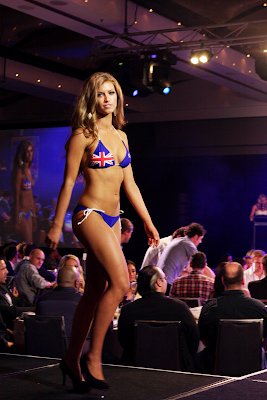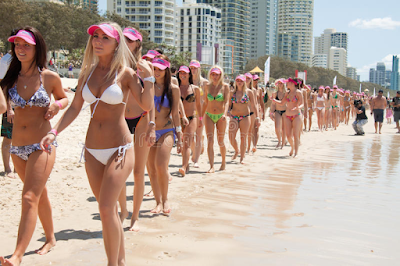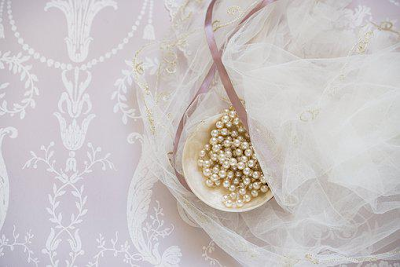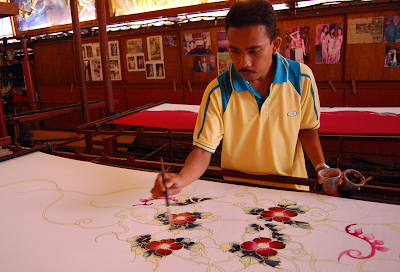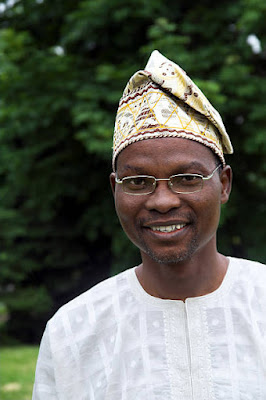Featured
- Get link
- X
- Other Apps
AUSTRALIAN DRESS
DRESS IN AUSTRALIAN STYLE.
The British initially arrived in Australia in the late eighteenth century.
Incoming officials, convicts, and later settlers brought with them clothing traditions and preferences that clashed with the indigenous people's traditional clothes.
Confused cultural perceptions between newcomers and indigenous peoples marked the nation's early history.
Given the colonization of Australia, white Australians have maintained a considerable dependence on imported apparel, fabrics, aesthetic conceptions, and manufacturing knowledge from Europe, the United Kingdom, India, the United States, and, subsequently, China.
Surprisingly, France, rather than Great Britain, had the most powerful effect on early Australian fashion, with a continuous record of Parisian influence on clothing and millinery from at least the 1820s until the late 1950s.
At the same time, Australian ready-to-wear designers have been heavily influenced by the sleek, utilitarian sports and leisure clothing of the United States.
However, it is a mistake to think of Australian clothing as a provincial version of that of other nations, even though there is some truth to this.
While there are just a few examples of recognizably Australian clothes, Australians' identities are communicated via clothing in a complex mix of sometimes subtle components and associated behaviors that defy established notions of class.
Climate change, as well as early human impact on the land and on the goldfields, all play a role.
Even uniquely Australian outfits, such as the all-weather Dryzabone coat, are not always worn throughout the country; clothing in Australia has always had a regional component, as well as a distinct urban and rural difference.
Close relations with Asia, as well as migrants such as Greeks and Muslims, each with their own set of customs, contribute to the image of Australian attire.
The clothing of indigenous Australians, many of whom are economically disadvantaged and live in isolated places with little access to new clothes, adds still another layer of complexity to the broader picture of what people have worn, and continue to wear, throughout Australia.
Scholarship for Fashion.
The study of clothing and fashion in Australia was restricted until the 1990s, for a variety of reasons, one of which being the cultural disparagement of a practice typically linked with women's interests.
Because of the harsh weather circumstances in rural regions, which are dominated by males, attractive clothing was generally a low priority.
Historically, Australian men have taken pleasure in their lack of attention to the finer points of appearance, believing that this is incompatible with masculinity.
While this conservatism evolved dramatically in the 1980s, with the rise of urban life and a more materialistic societal outlook, clothing disparagement seems to have flowed on to a general anxiety about the issue of fashion.
Museums and art galleries, with the exception of the Powerhouse Museum in Sydney, have exhibited little continuous interest in collecting Australian attire, particularly daily wear.
One exception is the collection of penitentiary apparel.
All of this has contributed to the subject's lack of legitimacy, which is progressively being addressed as Australia builds confidence in its own fashion industry's products and the displaying of dress by its movie stars and athletes.
Dress and the First Australians.
Unlike colonial immigrants, indigenous Australians do not see clothing as a method of displaying authority and distinction.
Their concerns have been and continue to be centered on communal membership, ceremonial adornment, or political opposition, as they embrace and reject the Western dress system in various ways.
Indigenous peoples used to go mainly unclothed, with the exception of kangaroo and opossum skin cloaks, painting their bodies with earth pigments and decorating them with natural fibers, shells, bark, and leaves as accessories.
Government officials, missionaries, and pastoralists, on the other hand, attempted to impose Western clothes on anyone with whom they came into touch, utilizing it as an acculturation tool and often as a reward system.
The forced use of European clothing led to the demise of indigenous people's garment-making abilities, and probably likely contributed to their early health issues.
Most indigenous people wear Western-style clothes in the early 2000s, while regional patterns of T-shirt, dress, and scarf use may be seen in isolated locations.
The Akubra hat and the knitted cap (beanie) are two examples of Western clothing that have been adopted into indigenous cultural practice.
Indigenous Australians have been encouraged to manufacture and sell their own fabric, T-shirt, and jewelry designs since the 1960s as a means of attaining self-sufficiency by the Australian government.
Some practitioners, such as Bronwyn Bancroft, Lenore Dembski, and Robyn Caughlan, the first indigenous designer to debut a ready-to-wear collection at the Mercedes Australian Fashion Week in 2003, became fashion designers in their own right starting in the 1980s.
These designers' work, which emphasizes vibrant textile patterns, provides a fascinating juxtaposition to contemporary popular fashion.
Other successful companies, such as Balarinji, and European designers such as Jenny Kee, Linda Jackson, and Peter Morrissey, have and do collaborate cross-culturally, with the latter employing fabrics made by indigenous artist Jacinta Numina Waugh.
Signifying Australia's Nationality.
Since colonial times, there have been significant geographical distinctions in Australian clothing.
Sydney's fashion is more American in style, whilst Melbourne's is more British and traditional, and subtropical places like Brisbane and Perth embrace brighter, more casual attire influenced mostly by the environment.
Despite the fact that these characteristics are not uniquely Australian, regionalism is one manner in which Australians identify themselves.
Another distinguishing feature of colonial periods was a purported equality in men's clothing.
It was associated with the wardrobe of experienced rural "old hands," and comprised of rugged rural and goldfields garb that was significantly distinct from typical metropolitan wear.
This included smock frocks, checked shirts, and hardwearing moleskin trousers and boots, as well as cabbage tree (palm-leaf) hats or slouch felt hats, subsequently the Akubra hat, smock frocks, checked shirts, and hardwearing moleskin trousers and boots.
This male apparel has developed a mythology, with it being seen as particularly Australian, but this has not been the case with women's clothes.
RM Williams and Blundstone boots, for example, continue to promote this mythology and sell replicas of their goods globally, but now to both sexes and not only for rural use.
From the 1940s forward, there was a trend for Australian themes and indigenous color schemes in clothing and swimsuit materials.
However, the 1970s were a watershed moment in the history of recognizably Australian fashion.
Jenny Kee and her wife Linda Jackson, who opened the Flamingo Park shop in Sydney in 1973, pioneered a revolutionary form of art apparel that subsequently paid homage to Australia's natural flora and wildlife, among other romantic inspirations.
It owed its existence to the designs of indigenous peoples with whom they cooperated, or rather, exploited.
In the decade that followed, a number of Australian businesses found success in the international market.
Coogi and Country Road were among them, with higher quality apparel in "natural" earthy hues and outlets in the United States by 1985, promoting so-called rural ideals.
Colorful, regionally inspired Australiana designs peaked in popularity in the late 1980s, but with the emergence of more minimalist trends in the early 1990s, they fell out of favor for daily wear.
Only traces of this may be seen now, mostly in clothing aimed to tourists.
Social Position and Class.
From the beginning of colonization, there was a notable tension in the ways colonial Australians represented their social status via clothing.
There are many examples of misplaced social identity throughout colonial history.
Strangers' inability to understand class markers contributed to some of the animosity.
It was also fueled by a widespread notion of classlessness, as well as a similarly acute awareness of social standing, which is typical of a tiny population.
Some of the alleged absence of class divisions may be attributed to informality in social interactions and the prevalence of the open-air lifestyle; others could be attributed to the tiny, sometimes inward-looking population.
However, modern Australians of both sexes may be said to swing from a general indifference in high fashion to a more pompous investment in elegant, even vulgar visibility, which was fueled by increased wealth.
For example, Australians dress extravagantly for important occasions like as weddings and attendance at horse races, as well as for leisure, although they prefer casual attire and dressing down.
Some of the euphoria is due to a rogue type of "larrikinism" that affects both men and women.
Clothing and Fashion Industries.
This is primarily an Australian word for a kind of boisterous, non-conformism compounded by a self-conscious indifference in recognized patterns of trendy attire and conduct.
Although Eastern Australia was always reliant on imported clothes and fabrics, particularly high-grade items, a local clothing, footwear, and textile industry was established shortly after colonization.
These sectors have had a long and tumultuous history, however Australia had a solid reputation for producing high-quality, comfortable apparel and textiles until the mid-twentieth century.
Local wool textiles were effectively pushed immediately after World War II, first by the Australian Wool Board and then by the Australian Wool Corporation, but the situation at the quality end of the fashion spectrum has remained endemically unpredictable.
While a fashion business began to form in the early twentieth century, the rag trade reached its pinnacle in the decade after World War II.
However, beginning in the 1960s, Australia's textile and apparel industries began to lose market share; combined with protectionism, the mainstream industry, with a few outliers such as the Prue Acton and Trent Nathan brands, began a rapid fall.
Chronic capital shortages, a small population, a lack of capacity to sell high-volume products, and gradual tariff reductions beginning in the late 1970s rendered Australia's industries less and less competitive with imports, particularly from China.
By the 1980s, the latter had become the country's primary supplier of clothes. The local industry continued to deteriorate.
In 1996, the Mercedes Australian Fashion Week and the inaugural Melbourne Fashion Festival were launched in Sydney, after the lowest clothes retail sales on record.
Both were aimed at promoting Australian goods and attracting overseas customers.
In the mid-1990s, a handful of fresh, innovative Australian designers had a major effect in Europe and the United States, despite neither venture's overwhelming success.
Collette Dinnigan, Asian-born Akira Isogawa, who debuted in 1996, Sass and Bide's edgy apparel (started in 1999), Easton Pearson's fusion designs fusing traditional Indian and African cultures with modern concepts, and Morrissey are among them (who launched solo in 1997).
Despite these achievements, Australian fashion remains marginalized, with its identity constantly in flux and infrequent international recognition.
In truth, the industry's challenges have been aggravated rather than alleviated by competitive worldwide marketing, the impression that the nation is far off from major style centers, and its seasons that are out of sync with the Northern Hemisphere.
Leisurewear.
Australia is, unsurprisingly, most successful in the leisure and beachwear industries.
Early in the twentieth century, a local swimsuit industry was established, which was soon bolstered by the advent of American swimwear manufacturers such as Jantzen and Cole of California.
The Speedo label was established in 1928, and the firm went on to become one of Australia's most popular swimsuit companies, exporting to the United States by the late 1950s.
Many popular mainstream swimwear designers, such as Brian Rochford, Paula Stafford of the Gold Coast, and Nicole Zimmermann, have become household names.
Perhaps more importantly, creative youth-oriented surf-wear companies like Rip Curl, Billabong, Mambo (with its bitingly satirical designs launched in 1984 by Dare Jennings), and Quiksilver have gone on to successfully represent Australian style in the worldwide arena.
Indeed, a bright tanned physique complemented by attractive swimwear is a crucial ingredient in the ubiquitous picture of Australia as an outdoor country free of restraints.
Find Jai on Twitter | LinkedIn | Instagram
See also:
Ethnic Dress; Swimwear.
References And Further Reading:
Fletcher, Marion. Costume in Australia, 1788–1901. Melbourne, Australia: Oxford University Press, 1984. First serious account of colonial dress but with an emphasis on bourgeois fashions.
Joel, Alexandra. Parade: The Story of Fashion in Australia. Sydney, Australia: HarperCollins, 1998. Text focused on period styles in high fashion. Of limited theoretical use. Revised, augmented edition.
Maynard, Margaret. Fashioned from Penury: Dress as Cultural Practice in Colonial Australia. Cambridge, U.K.: Cambridge University Press, 1994. First academic study of colonial dress across all classes.
“Indigenous Dress.” In Oxford Companion to Aboriginal Art and Culture. Edited by Sylvia Kleinert and Margo Neale. South Melbourne, Australia: Oxford University Press, 2000. First nonanthropological account of the dress of indigenous Australians.
Out of Line: Australian Women and Style. Sydney, Australia: University of New South Wales Press, 2001. First comprehensive text on twentieth-century women’s dress and the fashion industry in Australia, including an account of indigenous designers.
Twopeny, R. E. N. Town Life in Australia 1883. Sydney, Australia: Sydney University Press, 1973.
- Get link
- X
- Other Apps



































